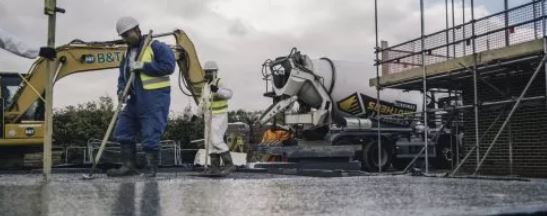 Add My Company
Add My Company

Concrete plays an important role in many aspects of construction, not least being used to create the foundations that will ensure the long-term stability of the finished structure.
However, as is always so crucial in the concrete industry, getting the right mix for the job is not just a case of throwing together some cement, water and aggregates and hoping for the best.
Table of Contents:
In this article, we’re going to explore some of the key factors you need to consider when mixing concrete for housing foundations.
What can impact the type of concrete used?
The soil
The starting point when designing foundations for your building is understanding the conditions of the ground you’re building on, and for this you may need to conduct a soil survey. You need to know what its load-bearing capacity will be, how susceptible it will be to movement and how it drains.
Common ground conditions include:
Clay: Prone to subsidence and movement as moisture content changes.
Sand and gravel: Good for both load-bearing and drainage.
Peat: Likely to require reinforcement due to its high organic content.
Rock: Strong and stable, but expensive to excavate.
The type of foundations required
Once you have an exact understanding of the soil and ground conditions at your site – and knowing the design of the building to be constructed – you’ll then be in a position to design the type of foundations needed for your project.
Strip: An economical option, ideal for when the soil has good load-bearing capacity. Used for supporting load-bearing walls, it consists of continuous footings set into trenches.
Raft: A raft foundation is a solid slab of concrete that spreads the load by covering the whole footprint of the building. It’s likely to be used when the soil has a high water table or is going to be more prone to subsidence.
Pile: When soil near the surface won’t be able to support the required load, sometimes it’s necessary to drill deep columns to where there’s firmer ground and filling in with the concrete.
Pad: These consist of usually small pads of concrete installed at a shallow depth in stable ground that are used to support localised loads, including columns.
Concrete for Foundations
If you’re looking for concrete for housing foundations, speak to our friendly team today. We can help you find the exact quantity and mix of concrete you need.
Common types of concrete used for housing foundations
Here at Stewart Brothers Concrete, we can supply a range of concrete types suitable for use in housing foundations, all of which are BSI Kitemark certified. These include:
C25 Design Concrete: A strong, versatile mix with a compressive strength of 25 Newtons after 28 days.
C30 Design Concrete: With good weather resistance and a compressive strength of 30 Newtons after 28 days, a great choice for projects needing strong load-bearing capacity.
RC25: Reinforced concrete that is highly resistant to harsh weather.
RC30: Extremely strong reinforced concrete ideal for when you need exceptional load-bearing qualities from your foundations.
Our housing foundation concrete is available to customers across Kent, from our bases at Ashford, Dover and Sittingbourne. Whether you’d like further advice or information, or you’re ready to place an order for delivery to your site, get in touch with the concrete experts at Stewart Brothers Concrete today.
For more information on What type of concrete is needed for housing foundations? talk to Stewart Brothers Concrete
